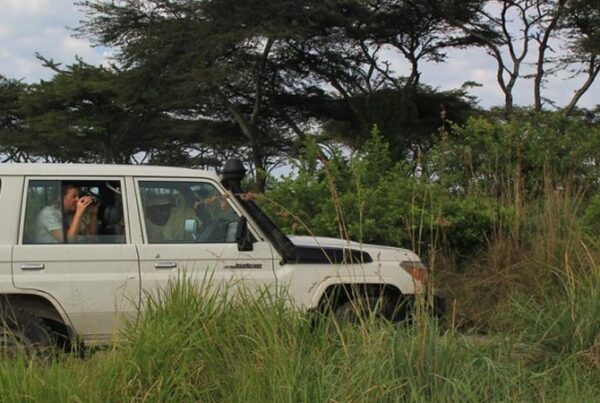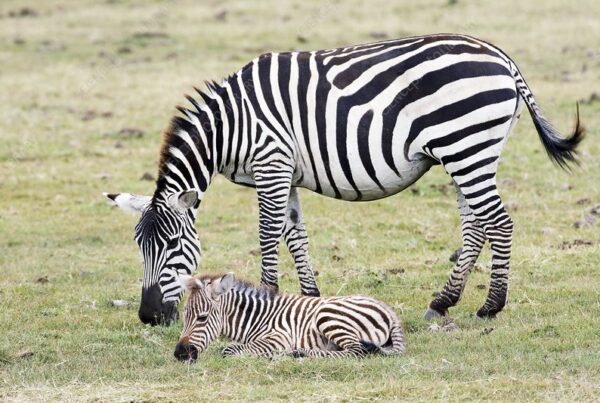What Cultural Experiences Should I Include in a Uganda Trip? | 2026 Uganda Travel Guide
Uganda is more than its rolling savannahs, mist-shrouded mountains, and silverback gorillas; it is a nation where culture beats at the heart of every experience. Beneath its landscapes lies a living rhythm of tradition and storytelling, expressed through dance, craft, food, and hospitality. A trip to Uganda is incomplete without immersing oneself in its cultural depth — the soulful encounters that connect travelers not just to the land, but to the people who give it meaning.
For those who venture beyond the well-trodden safari trails, Uganda unfolds as an intimate mosaic of ethnic diversity. Over 50 tribes coexist across its regions, each with its own language, customs, music, and heritage. From the ancient kingdoms of Buganda and Bunyoro to the pastoral Karamojong and the forest-dwelling Batwa, every community adds a distinctive hue to the nation’s vibrant cultural tapestry.
This in-depth exploration reveals the most enriching cultural experiences to include in your Uganda itinerary — encounters that celebrate humanity in its purest form. To truly understand Uganda is to sit by its fires, listen to its drums, share its meals, and walk in rhythm with its traditions.
The Heartbeat of Tradition: Understanding Uganda’s Cultural Landscape
Uganda’s cultural diversity is rooted in its geography. The fertile central plains, the highland west, the dry northeast, and the lakeside east all shaped the evolution of distinct societies. These regions developed their traditions around what nature provided — cattle in the north, bananas in the west, fish in the east, and governance in the central kingdoms.
The Baganda, Uganda’s largest ethnic group, inhabit the central region surrounding Kampala. Their influence is deeply embedded in the country’s governance, language, and social systems. The Banyankole, Bakiga, and Batoro dominate the west with strong pastoral and agricultural traditions. In the north, the Acholi and Langi are known for their resilience, storytelling, and communal spirit, while the Basoga and Bagisu in the east are celebrated for their ceremonial rituals and music.
Understanding this mosaic of identities is the first step in experiencing Uganda’s culture authentically. Each tribe expresses its history through everyday life — the way food is prepared, homes are built, and songs are sung.
Travelers who take the time to engage with these communities quickly learn that Uganda’s greatest treasures are not found in museums but in the hearts of its people.
The Royal Heritage: Exploring Uganda’s Ancient Kingdoms
Before colonial borders defined modern Uganda, powerful kingdoms thrived across its territories. Visiting these royal centers offers a glimpse into the pre-colonial civilizations that shaped Ugandan society long before modern governance.
The Buganda Kingdom, centered in Kampala, remains the most influential. The Kabaka (King) still commands great respect, and his palace in Mengo stands as a symbol of enduring heritage. The Kasubi Tombs, a UNESCO World Heritage Site, serve as the resting place of Buganda’s kings — a sacred site that combines architecture, spirituality, and history. The tombs’ thatched domes, constructed using traditional techniques, represent the craftsmanship and reverence of the Baganda people.
In the west, the Tooro Kingdom near Fort Portal invites visitors to experience the elegance of its palace overlooking the Rwenzori Mountains. Here, cultural performances showcase royal dances and narratives passed through generations. Similarly, the Bunyoro-Kitara Kingdom, once among the most powerful in East Africa, maintains a proud legacy of leadership and innovation.
These kingdoms are not relics but living institutions. Visitors can attend royal ceremonies, meet cultural elders, and witness the delicate balance between modernity and tradition. The experience reveals that Uganda’s cultural identity remains rooted in respect — for ancestry, community, and continuity.
The Batwa People: Keepers of the Forest Spirit
In the shadow of the Bwindi and Mgahinga forests live the Batwa, also known as the “Forest People.” For thousands of years, they lived as hunter-gatherers, moving gracefully through the dense jungles that they called home. When the forests became national parks to protect the endangered mountain gorilla, the Batwa were relocated, altering their way of life forever.
Today, community initiatives allow travelers to engage with the Batwa in meaningful ways that support cultural preservation and dignity. Visiting the Batwa Cultural Trail offers insight into their ancient lifestyle — the use of medicinal plants, fire-making techniques, hunting traditions, and storytelling rituals. The experience is emotional and educational, shedding light on the delicate balance between conservation and indigenous rights.
The Batwa teach that the forest is not merely a habitat but a living being — one that breathes, heals, and shelters. Listening to their songs by a campfire or watching them dance among the trees evokes a sense of timeless connection between humanity and nature. For many travelers, this encounter becomes one of the most profound memories of their Uganda journey.
The Karamojong: Warriors of the Northeast
In Uganda’s far northeast lies Karamoja, a region that defies time and convention. Home to the Karamojong, this land of sweeping plains and cattle kraals embodies the rugged beauty of traditional Africa. The Karamojong are semi-nomadic pastoralists known for their striking attire, body adornments, and unwavering pride in their heritage.
Visiting a Karamojong village feels like stepping into a living museum of tradition. Their homesteads, called manyattas, are circular enclosures made of acacia branches, each housing extended families and their livestock. Guests are welcomed with songs, dance, and stories that illuminate a culture built on honor, community, and the deep spiritual bond between people and cattle.
Cattle, to the Karamojong, are not simply livestock but symbols of wealth, beauty, and identity. Every aspect of life — marriage, conflict, and ceremony — revolves around them. Engaging with the community offers travelers an understanding of resilience in one of Uganda’s harshest environments, where tradition thrives despite modernization.
In recent years, cultural tourism initiatives have allowed the Karamojong to share their heritage on their own terms. Travelers are invited to participate respectfully — observing dances under the stars, learning the meaning behind their beadwork, or sharing stories by the fire. It is an encounter that strips away pretense, revealing the raw authenticity of Uganda’s cultural heartland.
The Gisu and the Imbalu Ritual: A Rite of Passage Like No Other
Among the Bagisu people of eastern Uganda, near Mount Elgon, the Imbalu circumcision ceremony stands as one of the country’s most spectacular and culturally significant traditions. Practiced for centuries, this ritual marks the transition from boyhood to manhood and serves as a defining event in the life of every Gisu male.
The ceremony takes place in even-numbered years, attracting thousands of participants and spectators. Drums echo through the hills, and warriors adorned with feathers and paint dance in rhythm as families gather to witness the transformation. The atmosphere is electric — a blend of anticipation, courage, and celebration.
For travelers, witnessing Imbalu (with permission and cultural sensitivity) offers a window into Uganda’s living anthropology. It is not merely a ritual but a reaffirmation of identity and unity within the Gisu community. Elders explain the deep symbolism behind the ceremony, emphasizing courage, discipline, and belonging.
This event, though ancient, continues to evolve, blending traditional music with modern influences while retaining its spiritual essence. Experiencing it firsthand is to witness a society that honors its past while embracing the present.
The Baganda Dance and Music: The Pulse of Central Uganda
To hear the drums of Buganda is to feel the pulse of Uganda itself. Music and dance occupy a sacred place in Ugandan culture — tools of communication, celebration, and healing. In the Buganda region, cultural troupes perform traditional dances that capture the grace and energy of this heritage.
The Bakisimba dance, for instance, originated as a royal expression of joy after a victorious war. It is characterized by rhythmic hip movements accompanied by drums and xylophones. Each beat tells a story, each gesture a message of gratitude and triumph.
In Kampala and Entebbe, cultural centers such as the Ndere Cultural Centre host nightly performances that bring together music from across Uganda’s tribes. These shows offer travelers a colorful introduction to the country’s diversity — from the stomping dances of the Acholi to the graceful movements of the Banyankole.
But the most memorable moments often happen spontaneously — a village gathering, a wedding, or a community celebration where strangers are invited to join the dance. In Uganda, music is not a performance; it is a way of life, an invitation to belong.
The Banyankole and the Cattle Culture of Western Uganda
In the rolling hills of Mbarara and Bushenyi, the Banyankole people uphold a deep-rooted pastoral heritage centered around the Ankole longhorn cattle — majestic creatures with sweeping horns that symbolize pride and wealth.
Visiting a traditional Banyankole homestead allows travelers to experience the rhythms of rural life — milking cows at dawn, herding through green pastures, and preparing local dishes like eshabwe, a milk-based sauce served with matoke.
Elders share stories of ancient herding traditions, courtship rituals, and community leadership structures. Guests quickly learn that cattle are woven into every aspect of life — from song and poetry to negotiation and kinship. The pastoral serenity of western Uganda reflects a slower, gentler side of the country’s identity, one grounded in harmony between humans and animals.
This experience, often offered through community tourism initiatives, provides a powerful contrast to the intensity of urban life. It is here that travelers rediscover simplicity and gratitude — values deeply embedded in Uganda’s cultural philosophy.
The Tooro and the Kingdom of Kindness
The Tooro Kingdom, with its headquarters in Fort Portal, is one of Uganda’s most charming cultural regions. Known for its youthful monarch, the Tooro Kingdom represents a blend of modern influence and traditional grace. Visitors are welcomed into a culture of politeness, respect, and storytelling, where hospitality is a sacred duty.
The Tooro people celebrate their identity through festivals such as the Empango Coronation Ceremony, an event filled with royal processions, traditional songs, and symbolic rituals that reaffirm loyalty to the Omukama (King).
Exploring Tooro also means discovering the stunning landscapes that surround it — crater lakes, tea plantations, and the Rwenzori Mountains. Here, culture and nature intertwine seamlessly. Travelers often find that the kingdom’s charm lies not only in its history but in its people, whose warmth makes every encounter feel like family.
The Food and Coffee Culture: A Taste of Uganda’s Soul
No cultural exploration of Uganda is complete without tasting its food and drink, for every dish tells a story. Meals are moments of unity, where families and strangers gather to share nourishment and conversation.
In villages, travelers are invited to join cooking sessions — peeling matoke, pounding groundnuts, or roasting plantains over open fires. Traditional dishes such as luwombo (stewed chicken or beef wrapped in banana leaves) reflect both creativity and respect for nature’s abundance.
Uganda’s coffee culture also carries deep cultural significance. From the highlands of Bugisu to the slopes of Rwenzori, coffee is grown, harvested, and prepared with ritualistic precision. Farmers proudly demonstrate how beans are dried, roasted, and brewed using local methods. Tasting freshly brewed Ugandan coffee becomes a sensory journey — an experience that connects traveler to land, soil, and story.
Food in Uganda is not simply eaten; it is celebrated. Each flavor is a reminder that culture, like cuisine, is about sharing.
The Markets, Crafts, and Everyday Life
To experience Uganda’s living culture, one must visit its markets — the bustling centers of exchange and community. In cities like Kampala, Jinja, and Fort Portal, markets overflow with color and energy. Stalls display handwoven baskets, barkcloth art, wood carvings, and beaded jewelry, all reflecting local identity.
Artisans take pride in their craftsmanship, often inviting visitors to observe or participate. Buying directly from them not only supports livelihoods but also preserves Uganda’s artisanal heritage.
Equally vibrant are the food markets, where aromas of roasted maize, fresh pineapples, and spices fill the air. Here, interaction is immediate and genuine — bargaining is as much a conversation as it is a transaction. These markets are microcosms of Uganda’s culture, representing the daily rhythm of life in its most tangible form.
Responsible Cultural Travel: Giving Back to Communities
Cultural tourism in Uganda thrives on the principle of mutual respect. Travelers who approach communities with humility and curiosity are rewarded with authentic experiences. Many local initiatives reinvest tourism income into education, healthcare, and conservation, ensuring that culture remains a source of empowerment rather than exploitation.
Participating in community-led projects — whether it’s planting trees, supporting a school, or attending a local festival — allows travelers to contribute positively while learning deeply. This exchange of respect transforms tourism into partnership, bridging cultures in a way that benefits both visitor and host.
Conclusion: The Human Heart of the Pearl of Africa
To travel through Uganda is to encounter humanity in its most genuine form. The country’s landscapes may capture the eye, but its people capture the soul. From the royal ceremonies of Buganda to the forest songs of the Batwa and the warrior dances of Karamoja, Uganda’s cultural experiences weave together history, identity, and hope.
Every handshake, every dance, every shared meal becomes a lesson in connection — a reminder that true travel is not about seeing new places, but about understanding new ways of being.
For those ready to immerse themselves in the full depth of Uganda’s culture, it is best to book their Africa tours and safaris with WildHorn Africa. With carefully curated itineraries that balance wildlife and culture, WildHorn Africa ensures travelers experience the heart of Uganda — not as spectators, but as participants in its living story.
Because the real beauty of Uganda lies not only in its gorillas or lakes, but in the smiles of its people, the sound of its drums, and the warmth of its welcome.





 WildHorn Africa – Authentic and unforgettable tours across Africa, guided by local experts who know the land, wildlife, and culture best.
WildHorn Africa – Authentic and unforgettable tours across Africa, guided by local experts who know the land, wildlife, and culture best.


